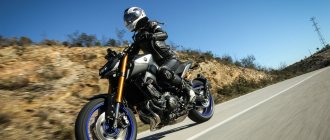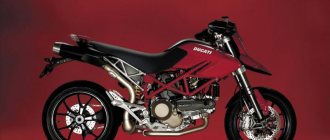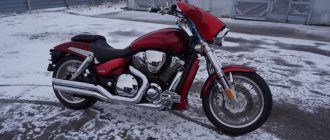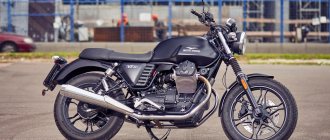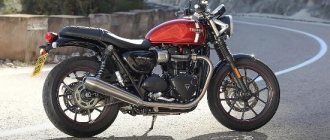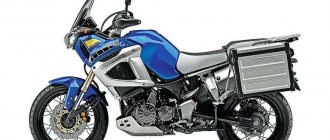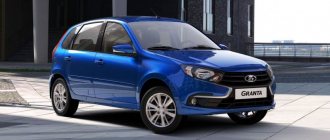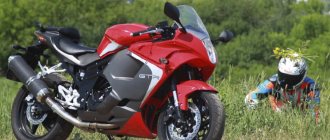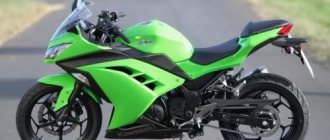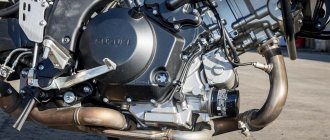BMW G650GS
Model class : touring enduro.
Years of production/sales : 2009-
BMW G650GS
The BMW G650GS was originally introduced at the end of 2008 as a successor to the 1-cylinder BMW F650GS (2000-2007). Despite the fact that the F650GS was replaced by a more technologically advanced 2-cylinder model of the same name, but with an 800 cc engine, the market needed a cheap, versatile motorcycle that was accessible to the general population. This is how the BMW G650GS model appeared.
The basis of the motorcycle was the long-known 1-cylinder Rotax engine from the BMW F650GS (2000-2007) model, which for the G650GS was assembled in China from Austrian spare parts. The first models of the motorcycle were equipped with an original Austrian-assembled Rotax engine - it has a silver block color (engines assembled in China are painted black). Unlike the previous BMW F650GS, the new BMW G650GS began to produce 3 hp. more power (53 hp). Other differences include an asymmetrical headlight, alloy wheels, a smaller fuel tank (from 16.5 liters to 14 liters), a 400-watt generator and a new dashboard from the older GS versions. Also still available are versions with ABS and heated grips (standard in the US and Australia).
Until 2010, the BMW G650GS was officially only available in the US, South America, Australia and Greece markets, however, since 2010 the model has gained global availability in all major markets with a stated engine power of 48 hp. (European versions).
Since 2012, the BMW G650GS Sertão version has been available, which is essentially a successor to the BMW F650GS Dakar. This version features spoked wheels, original paint and Sertão lettering on the plastic, a 21' front wheel, off-road wheels, longer-travel suspensions and increased seat height.
BMW G650GS Sertao: Test drive from Auto.Mail.ru
BMW G650GS Sertao The appearance of a new incarnation of the little “Goose” has been awaited for a long time, ever since the legendary and deservedly beloved F650GS was discontinued in 2007. Obviously, the “double-barreled gun”, designed to replace the obsolete motorcycle, could only partially do this. And so, last year, BMW, “at numerous requests from workers” around the world, returned the legendary enduro to service, in an updated outfit.
However, the rejoicing of fans did not last long. The new motorcycle, now called G650GS, has not only a new design, but also noticeably lost its off-road qualities. Quite short-travel suspensions, cast aluminum alloy wheels, 19-inch front rim, an abundance of fragile plastic...
The first tests of the updated “Goose” last year showed that the motorcycle is not bad in the city and even on the highway, if you don’t try to break speed records, but in terms of off-road characteristics, everyone agreed: “it’s better not to leave the asphalt.” Many people remember that the old “Goose” existed in two forms. An ordinary and “evil” Dakar SUV. The Dakar differed from the base model by longer-travel suspensions, “toothy” stock tires, steering wheel protection, a higher windshield and some other details. Of course, everyone who is “in the know” has been waiting for something similar for a whole year in the second series of the epic with “Geese”. Fortunately, the “Bavarians” justified the aspirations of the sufferers and showed the world the “correct” version of the younger GS - Sertao. After, frankly speaking, disappointment with the G650GS last year, I started this test with a considerable amount of skepticism. Just think, they stuck the twenty-first wheel... However, first things first.
The saddle height of the off-road version of the younger “Goose” is 80 mm higher – 860 mm. Eight centimeters is no joke. You immediately feel that under you is not some kind of SUV, but the most off-road motorcycle. It's already nice. Although, it should be noted, even with my height, under 190, in order to place both legs on the ground with full feet, I had to stretch. But you can order a higher saddle - then the height will be a very severe 900 mm. The beam-style wide steering wheel ends up exactly where you need it. The tidy is crowned by a rather high, albeit narrow, windshield - a hint of the ability to stay at distances.
Aluminum spoked wheels 90/90R21 - front and 130/80R17 - rear - classics of the genre; nothing more durable in the conditions of stone potholes and holes has yet been invented. That's what the G650GS needed to become a real enduro! The readiness to conquer open spaces beyond asphalt and lawns is emphasized by the absence of a plastic shield hanging directly above the front wheel, and the extension nozzle on the “beak” that compensates for its absence. The handles and levers are covered, albeit with plastic, but quite good protection. In any case, when riding through the forest, you don’t have to be afraid of getting branches on your fingers or breaking a lever if you happen to crash, at least on the ground. And for dessert, the Sertao’s most important off-road acquisition is “long” suspensions with 210 mm of travel (the regular GS has 170 mm in the front and 140 in the rear). In general, in all respects it is a real SUV. Let’s add to this the Rotax single-cylinder, proven over the years, and we’ll get a serious contender, ready to compete on an equal footing with such already recognized giants as, for example, the Yamaha XT660Z Tenere.
Due to the lengthened suspensions, the geometric parameters of the motorcycle have also changed. The wheelbase has increased: from 1477 to 1484 mm and the fork offset: from 113 to 123 mm. In combination with the 21st front wheel, handling should not be so hot. However, on the move, the “Boomer” showed itself to be very collected and obedient, without the laxity inherent in many motorcycles with similar characteristics. This is due to the rather rigid suspension settings. It is felt that the “authors”, when creating the all-terrain vehicle, did not forget about the asphalt life of the car. The motorcycle obediently twists into curves, holds its trajectory well even at fairly large angles of inclination, and does not yaw or sway. When braking, the dive you expect from a long fork is practically not felt - approximately at the level of an average road driver. In a word, it’s just the thing for driving on asphalt. Even on the highway, at speeds close to the maximum (-160 km/h, and the motorcycle faithfully achieves it and even exceeds the stated figure), the motorcycle behaves stably, without a single hint of yaw or sway, so you can safely go off.
Naturally, there were some downsides here. The suspension faithfully transfers everything to the saddle and steering wheel, even the smallest irregularities and potholes in the asphalt, managing, by the way, to swallow larger ones quite tolerably. It’s not that it’s uncomfortable, it’s just unusual. Typically, SUVs are more willing to handle minor road hazards. Payback for the lack of swings and pecks. The well-known and proven Rotax engine did not present any surprises. Excellent traction from the very bottom makes it easy to maneuver in traffic, move where necessary at walking speed, and where necessary accelerate very vigorously. On the highway, the most comfortable speed, not only in terms of engine capabilities, but in terms of overall sensations, is 130-140 km/h. However, despite the prevailing opinion about the supposedly “dead single-barrel gun,” the motorcycle is capable of accelerating quite vigorously to overtake. It should be noted that such riding modes, although available to the rider, are still not typical for this motorcycle. His element is to roll leisurely, like, one hundred to one hundred twenty kilometers per hour, “look around the surroundings” and enjoy the scenery. However, even when riding “all the way” the motorcycle is surprising in its efficiency. Average consumption in the combined traffic jam-highway-off-road cycle did not exceed 4 liters per 100 km. And if you go “without fanaticism,” then you can easily do it in three and a half. But even with an actual consumption of four liters, a 14-liter tank will be enough for 350 kilometers!
But what upset the Bavarians was the brakes. No, there is enough efficiency, there is no lack of power from the Brembo mechanisms. But there are some complaints about the feedback. The rear brake is too harsh. Almost every press on the pedal is accompanied by the whirring of the ABS system - it is quite difficult to dose the force. It is natural to assume that a motorcycle not equipped with an anti-lock brake system will cause its rider a fair amount of unpleasant moments, especially on wet roads. But the front brake, on the contrary, is too “oaky”. You have to press the lever harder than you would like. In a word, both brake mechanisms are characterized by insufficient information content, albeit with diametrically opposite roots of the problem.
It would be one-sided to test a motorcycle that claims to be a dirt SUV only on asphalt and smooth paths in suburban groves. Therefore, it was decided to conduct the off-road part of the test according to all the rules of off-road life. Select a point on the map and try to reach it. Naturally, the point was chosen without fanaticism - no abstract coordinates in the middle of the Tver swamps or mountain peaks. The finish line was set at one of the popular geocaching points a hundred kilometers from home. Asphalt and several kilometers of abandoned forest road, however, in light of the recent rainy days and recently melted snow, the road could be somewhat more tricky than the citizens who were there described it.
Actually, that’s exactly what it turned out to be. Muddy clayey ruts filled with muddy water, slippery grass and complete uncertainty about what is there around the bend. The situation was further complicated by the fact that before the test the GS was fitted with Metzeler Tourance “asphalt” tires. Throughout the six kilometers of off-road, I never ceased to be amazed by the Sertao. Even in the deepest puddles, on the most muddy clay, the motorcycle regularly carried me to my goal! Before each new puddle, I thought: “well, that’s it, now I’ll definitely plant it, and the three of us will dig it out.” Pipes! The engine grunted, tightened, and slightly skidded, Sertao regularly pulled himself and me out of the swamp. The torque “at the bottom” is simply delicious. No, not the one that folds the asphalt into an accordion behind the rear wheel. We'll leave this to all the road mastodons. This moment is juicy, unhurried, absolutely controlled. The transparency of the engine's reactions to turning the throttle is simply crystal clear! Pure pleasure from driving a light and controlled machine!
Returning the same way you came is boring. There is always an “other” road, it just doesn’t always suit those who choose. We were lucky this time, and the quality of the option offered to us by geography suited us. A classic “grader”, walking past the half-dead villages of the Tver region, in places smooth, but more often traditionally smashed into rubbish by trucks and tractors. This is where the hard asphalt suspension tuning turned out to be an ugly, bony side. You have to ride along the compacted ridge either very slowly or while standing. The reluctance of the suspension to “eat” small irregularities very quickly turns the guts of a lazy rider who does not want to ride in the rider’s stance into mousse. How the fork and shock absorber still lack adjustments! Still, in my opinion, the rigid suspensions should have been left to the “simple” GS, and the Sertao, as an “SUV,” should have been equipped with suspensions more suitable for off-roading, albeit at the expense of stability on asphalt. Real endurists are accustomed to this.
In recent years, many fans of off-road tourism have been complaining that there are almost no real “honest” SUVs left. The global motorcycle industry is driving pop SUVs, and there is nothing for real travelers to conquer the harsh off-road conditions with. Indeed, in the light touring enduro class, there is nothing left except the Yamaha XT660Z Tenere... Transalp has long since become fat and moved to live on the asphalt, Suzuki's DR series has completely died out... the list can go on for a long time.
It is in this situation that the appearance of a motorcycle, albeit not outstanding in its characteristics, but reliable and simple, capable of enduring the hardships and hardships of real long roads, and not only asphalt ones, is an event. The regiment of real touring enduros, in the full sense of the word, has arrived! And this is good news, especially considering that this really good motorcycle can be bought without selling your kidney to Mexico or your soul to the underworld.
Model review : BMW G650GS Sertao
Source : Auto.Mail.ru
Specifications
Technical characteristics of the BMW G650GS:
| Model | BMW G650GS |
| Motorcycle type | touring enduro |
| Year of issue | 2009- |
| Frame | steel (open type) |
| engine's type | 1-cylinder 4-stroke |
| Working volume | 652 cc |
| Bore x Stroke | 100x83 mm |
| Compression ratio | 11.5:1 |
| Cooling | liquid |
| Number of valves | DOHC, 4 valves per cylinder |
| Fuel supply system | injector |
| Ignition type | digital |
| Maximum power | 48 hp at 6500 rpm (non-European versions - 53 hp) |
| Maximum torque | 60 Nm at 5000 rpm |
| Transmission | 5-speed |
| type of drive | chain |
| Front tire size | 110/80 R19 59V (Sertao version - 90/90 R21 54S) |
| Rear tire size | 140/80 R17 69V (Sertao version - 130/80 R17 65S) |
| Front brakes | 1 disc, 300 mm, 2-piston caliper (optional switchable ABS) |
| Rear brakes | 1 disc, 240 mm, 1-piston caliper (optional switchable ABS) |
| Front suspension | 41 mm telescopic fork, travel - 170 mm (Sertao version - 210 mm) |
| Rear suspension | pendulum with monoshock absorber (adjustable preload and rebound), stroke - 165 mm (Sertao version - 210 mm) |
| Overall dimensions (LxWxH) | 2165x920x1390 mm (Sertao - 2185x920x1440 mm) |
| Seat height | 780 mm (Sertao - 860 mm) |
| Gas tank capacity | 14 l |
| Maximum speed | 170 km/h |
| Acceleration to 100 km/h (0-100) | 5.1 sec |
| Motorcycle weight (curb) | 192 kg (Sertao - 193 kg) |
